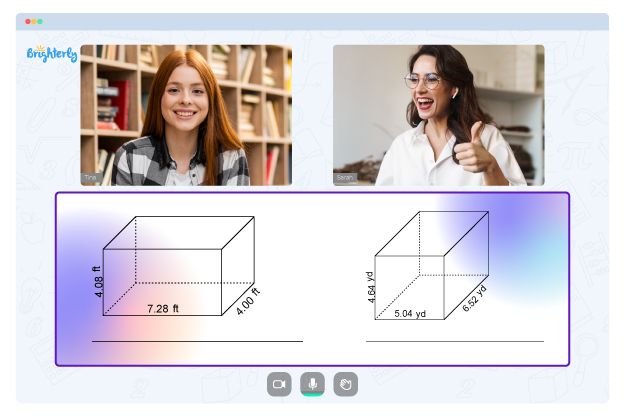Cone – Definition With Examples
Created on Jan 02, 2024
Updated on January 2, 2024
Kids love learning about shapes almost as much as teachers like teaching about them because shapes are easy to find around. After learning about a shape in class, kids will often find the examples scattered across the places they go to and even in their homes. There are many different shapes, and one of the most popular is the cone shape. Your kids may ask you “how many faces does a cone have?” or “how many edges does a cone have?” So, read on to learn about the cone.
What Is a Cone in Math?
A cone definition is simple. A cone is a three-dimensional shape that starts from a flat circular base to the apex.
Cones as a math concept are not limited to geometry; they are also studied in calculus and physics. Physical representations of the cones include traffic cones, ice-cream cones, and rockets or the design of missiles.
What Are the Elements of a Cone?
A cone has a few elements that make up the shape, and here are some of these elements:
- Base: The base of a cone is the flat circular surface on which the cone rests. The base is a two-dimensional shape and is always circular.
- Apex: The apex of a cone is the point at which all the slant edges of the cone converge. It is the pointy part of the cone at the top.
- Slant height: The slant height of a cone is the distance from the apex to any point on the cone’s circular base along a line perpendicular to the base. It is the distance along the curved surface of the cone.
- Height: The height of a cone is the distance from the apex to the center of the circular base or the distance along the vertical axis of the cone.
- Lateral surface: The lateral surface of a cone is the curved surface that connects the base and the apex. It does not include the circular base of the cone.
- Generatrix: The generatrix of a cone is any straight line that connects a point on the circular base to the apex. The generatrix lies on the lateral surface of the cone and is perpendicular to the base.
Properties of a Cone
To get to know the cone’s characteristics better, here are some of the shape’s properties:
-
Volume:
To calculate the volume of a cone, one can use cone volume formula V = (1/3)πr^2h, where r represents the radius of the base and h represents the height. This formula states that a cone’s volume equals one-third of the product of its base area and height.
-
Surface Area Formula:
To find the surface area of a cone, one must add the area of its base and its lateral surface area. The cone surface area formula for the surface area of a cone is A = πr^2 + πrs, where r represents the radius of the base and s represents the slant height.
-
Symmetry:
A cone possesses a single axis of symmetry, a line that passes through both the apex and the center of the circular base. The cone can be divided into two equal parts by this axis, and these parts will be mirror images of each other.
-
Similarity:
Two cones are considered similar if they have the same shape but different sizes. Similar cones have the same angle between the generatrices and the same ratio of the slant height to the radius. If one were to scale one cone to match the size of the other, they would be identical in shape.
-
Right Cone vs. Oblique Cone:
A right cone is a cone whose apex is directly above the center of its circular base. In contrast, an oblique cone is a cone whose apex is not directly above the center of its circular base. As a result, the oblique cone will appear tilted or slanted compared to the right cone.
-
Two Faces of a Cone:
First is the circular base, and second is the curved lateral surface. The circular base is a flat face, while the lateral surface is curved and does not have a specific shape.
Types of Cones
There are two major types of cones. These are the right cones and the oblique cones.
-
Right Cones:
A right cone is a cone whose apex is directly above the center of its circular base. The axis of symmetry passes through the apex and the center of the base at a 90-degree angle. This type of cone is commonly used in geometry and engineering applications.
-
Oblique Cones
An oblique cone is a cone whose apex is not directly above the center of its circular base. Instead, the axis of symmetry is tilted, which causes the cone to appear slanted or tilted. This type of cone is less common than the right cone but can be found in various applications, including architecture and design.
Apart from these two main types of cones, there are other types of cones, and here they are:
- Circular cones: A cone with a circular base.
- Elliptical cones: A cone with an elliptical base.
- Parabolic cones: A cone with a parabolic base.
- Hyperbolic cones: A cone with a hyperbolic base.
- Frustum of a cone: A truncated cone which is formed by cutting off the top of a cone with a plane parallel to its base. It has two circular bases and a curved lateral surface.
Each of the cones mentioned are unique and you can find them in different areas like physics, engineering, and in some cases, architecture.
Formulas Related to a Cone
A cone formula is used to solve problems around a cone. It could be the process of solving a cone equation or solving a problem that requires finding the perimeter, area, and height. Here are some formulas in relation to a cone:
- Volume of a cone: The volume of a cone is calculated using the formula V = (1/3)πr^2h, where r is the radius of the base and h is the height of the cone.
- Surface area of a cone: The surface area of a cone is defined by the formula A = πr^2 + πrs, where r is the radius of the base and s is the slant height of the cone.
- Slant height of a cone: The slant height of a cone is the distance from the apex of the cone to any point on the circular base. It can be calculated using the Pythagorean theorem as s = √(r^2 + h^2), where r is the radius of the base and h is the height of the cone.
- Base perimeter of a cone: The base perimeter of a cone is the circumference of the circular base and can be calculated as P = 2πr, where r is the radius of the base.
- Lateral surface area of a cone: The lateral surface area of a cone is the curved surface area between the base and the apex of the cone, and it can be calculated as L = πrs, where r is the radius of the base and s is the slant height of the cone.
- Height of a cone: The height of a cone can be found using the Pythagorean theorem as h = √(s^2 – r^2), where s is the slant height and r is the radius of the base.
So, why are these formulas important? Well, it’s simple. Kids are going to be solving cone-related problems across most science subjects and so, it’s highly important for them to get acquainted with the formulas now.
Solved Examples on Cones
Here are some solved problems for the cone shape:
Example 1
Find the volume and surface area of a cone with a radius of 5 cm and a height of 12 cm.
Solution:
Given: r = 5 cm, h = 12 cm
Volume of the cone = (1/3)πr^2h
= (1/3)π(5 cm)^2(12 cm)
= 314.16 cm^3
Surface area of the cone = πr^2 + πrs
= π(5 cm)^2 + π(5 cm)(13 cm)
= 282.74 cm^2
The volume of the cone is 314.16 cubic centimeters, and the surface area is 282.74 square centimeters.
Example 2
A cone has a base diameter of 12 cm and a height of 8 cm. Find the surface area of the cone.
Solution:
Given: Diameter of base = 12 cm, h = 8 cm
Radius of the base = 12 cm/2 = 6 cm
Using the Pythagorean theorem, we can find the slant height of the cone as:
s = √(r^2 + h^2)
= √(6 cm)^2 + (8 cm)^2)
= √(36 cm^2 + 64 cm^2)
= √100 cm^2
= 10 cm
Surface area of the cone = πr^2 + πrs
= π(6 cm)^2 + π(6 cm)(10 cm)
= 226.19 cm^2
The surface area of the cone is 226.19 square centimeters.
Example 3:
Find the volume of a cone with a radius of 5 cm and a height of 12 cm.
Solution: The formula for the volume of a cone is V = (1/3)πr^2h, where r is the radius of the base and h is the height of the cone.
Substituting the given values, we get V = (1/3)π(5^2)(12) = 100π cm^3. Therefore, the volume of the cone is 100π cubic centimeters.
Frequently Asked Questions
How many faces and vertices does a cone have?
A cone has two faces and no vertices.
What are some real-life examples of a cone?
Traffic cones and ice cream cones.
What is the difference between a cone and a triangle?
A cone has a circle at the base, while a triangle is flat at the base.
What is the volume of a cone?
The volume of a cone is represented by the formula, V = (1/3)πr^2h, where r is the radius of the circular base and h is the height of the cone.
What is the base area of a cone?
The base area of a cone is the area of the circular base of the cone. It is given by the formula A = πr^2, where A is the base area of the cone and r is the radius of the circular base.




